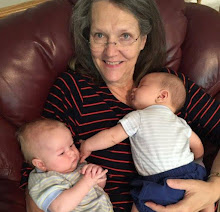Pres. Brigham Young respectfully invites Shadrach Roundy and family
REGULATIONS.
You will be required to start so as to pass the first mill, about four
Miles up the Kanyon, before 12 o’clock, on Thursday, the 23rd, as no per-
son will be allowed to pass that point after 2 o’clock, p.m. of that day.
All persons are forbidden to smoke cigars or pipes, or kindle fires, at
any place in the Kanyon, except on the camp ground.
The Bishops are requested to accompany those invited from their res-
pective Wards, and see that each person is well fitted for the trip, with
good, substantial, steady teams, wagons, harness, hold-back and locks
capable of completing the journey without repair, and a good driver, so as
not to endanger the life of any individual.
Bishops will, before passing the first mill, furnish a full and
complete list of all persons accompanying them from their respective Wards, and
hand the same to the Guard at the gate.
GREAT SALT LAKE CITY, July 18, 1857.
Shadrach Roundy was one of the 'Original Pioneers' and at this time was Bishop of the 16th Ward in Great Salt Lake City.
"The Sixteenth Ward was located between South Temple and Second North, and Ran from Second West on the East, to the Jordan River on the west. A large part of the land was lowlands and covered with water, but after turning the three channels of City Creek into one channel in 1856, and conveying the water along North Temple Street directly to the Jordan River, nost of the lowland near the river was reclaimed and settled. Originally, the middle channel of City Creek ran through the Sixteenth Ward. That part of the ward lying west of Ninth West between North Temple and Second North was not inhabited. Later it was known as 'Agricultural Park,' and still later it was designated as the State Fairgrounds...."
"...The organization of the ward dates from 1849. Isaac Higbee was ordained bishop on February 22, 1849, but acted only for a few weeks. On April 14, 1849 Shadrach Roundy was ordained bishop...."
"...The 16th Ward was the second ward to organize a Relief Society. It was organized by Bishop Roundy on the tenth of June 1854, and was known as 'The Benevolent Society' (probably so-named in memory of the first Relief Society of the Church organized by the Prophet Joseph Smith.) until January 27, 1855, when the name was changed to the Relief society."
"Pattie Sessions was called to serve as the first president. She was Utah's most famous midwife who safely delivered over two-thousand women in childbirth, having been set apart for this work by the Prophet Joseph Smith in Nauvoo...." (Tales of a Triumphant People, A History of Salt Lake County, Utah 1847-1900.)
July 24, 1857
"Holiday traffic jams have a long Utah history. On July 23, 1857, the logging road leading to Silver Lake (now Brighton) in Big Cottonwood Canyon was crowded with guests invited to a celebration of the tenth anniversary of the arrival of the Mormon pioneers. By mid-afternoon, 2,587 people, riding in 464 carriages and wagons, with 1,360 horses, mules, and oxen to pull them, had passed up the canyon road.
Serenaded by brass bands from Salt Lake City, Springville, and Ogden, the people set up camp near the lake. Companies of the Nauvoo Legion (the Utah militia) paraded and drilled. At sunset, a bugle call summoned the people to prayer. Brigham Young spoke of the arrival of the pioneers, and how God had blessed them to create a garden in the desert. A prayer of thanksgiving was followed by an evening of dancing in three plank-floored boweries built for the party."
"Pioneer Day began with breakfast prepared over hundreds of small campfires. The American flag flew from treetops and from nearby rocky peaks. Just after 9:00, rounds were fired from a small brass cannon in honor of Mormon leaders, and again an hour later to salute a parade of 10- to 12-year-old boys. For the most part, the crowds relaxed in small groups, went swimming and boating, or played on swings suspended from tree limbs.
About noon, four dusty horsemen – Abraham O. Smoot, Judson Stoddard, Porter Rockwell, and Elias Smith – arrived in camp, bringing the news for which Pioneer Day, 1857, is best remembered: The displeasure of the federal government with what they believed were conditions of anarchy in Utah had reached the boiling point. A large portion of the United States Army, estimated at 2,500 men, were marching toward Utah, beginning what we know today as the Utah War...."
"....Daniel H. Wells, a counselor to Brigham Young and future mayor of Salt Lake City, announced the news to the assembled campers. They recognized the gravity of the situation, but there was no panic, no angry speeches, and no dampening of the celebration. Soon enough the people of Utah would turn to defending their homes and families against what many considered to be an unlawful, unjustified mob invasion, but for the rest of that Pioneer Day they would celebrate the success of their ten years in the wilderness."
"The evening was spent in songs and toasts, 'after which,' according to reporter George D. Watt, 'dancing and general hilarity continued to a late hour.'
"Camp was broken early on the morning of July 25th, with a long and orderly train of wagons and carriages proceeding down the mountain and back to the city." (By: Ardis E. Parshall - November 19, 2008)
Ancestry Chain: TR, Lark, Kirt DeMar WOOD 1923-1987, Laura Elizabeth PARKER 1889-1971, Charles PARKER 1853-1935, Almeda Sophia ROUNDY 1829-1912, Shadrach ROUNDY 1789-1872.
Thanks to Uncle Hugh for sharing this invitation.




1 comment:
you probably already know this, but Bishop Roundy was asked by Pres. Young to have his YM build willow branch boweries for the event, like shade tents today. I can't believe how involved this party was!
Post a Comment